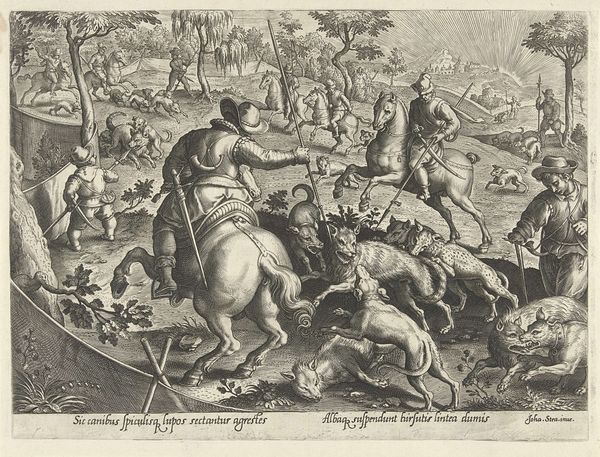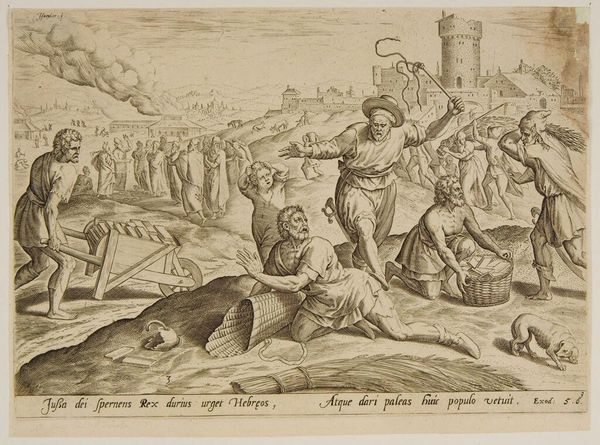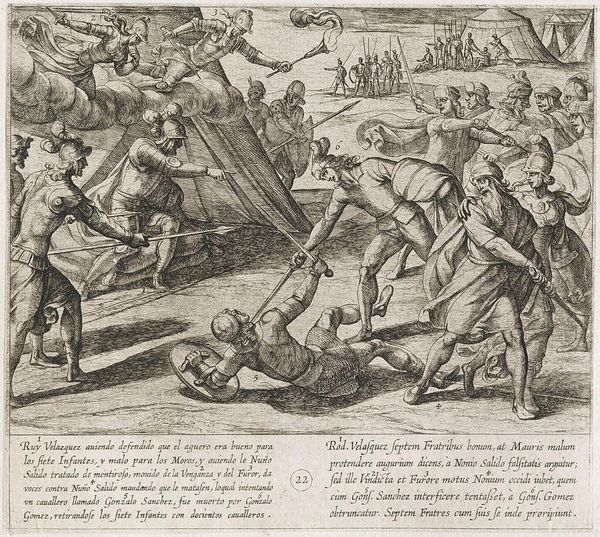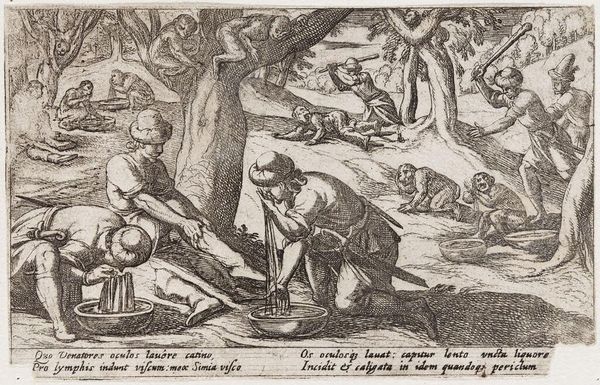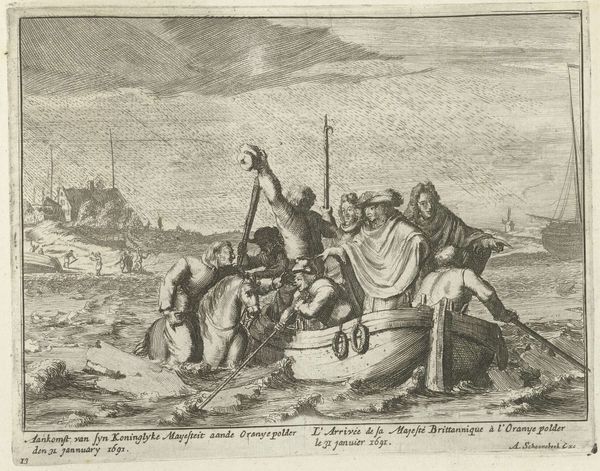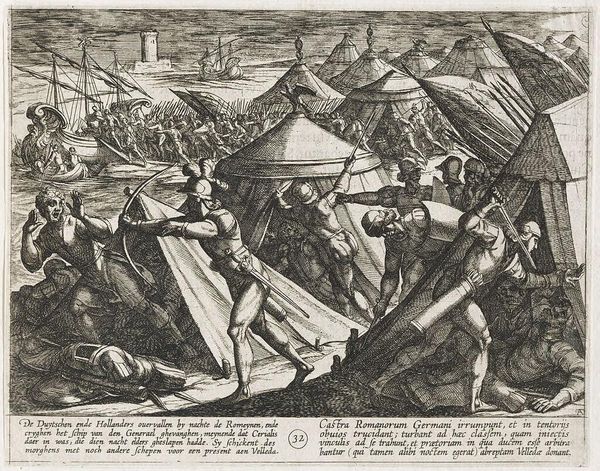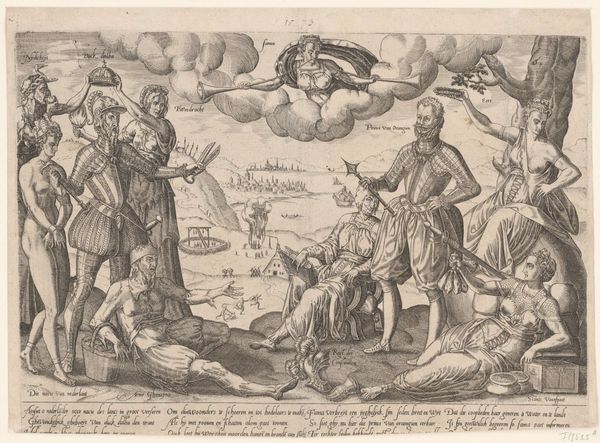
Copyright: CC0 1.0
Curator: Tempesta's "Fishermen and Families Collecting Clams" feels so bustling, doesn't it? Like a snapshot of a whole community’s rhythm. Editor: It’s a portrait of labor, but also of colonial encounter. These aren’t just "fishermen"; it's a 16th-century European imagining of Indigenous life, likely somewhere in the Americas. The engraver probably never saw this himself. Curator: Absolutely, it’s filtered through that lens. But look at the details – the smoke rising, the figures pulling the nets… there's a kind of lyrical observation, a sense of the everyday imbued with a bit of fable. Editor: The labor is romanticized; the "noble savage" trope is hard at work here. We must recognize how these depictions contributed to a dehumanizing narrative that justified colonization. Curator: Of course. Still, I'm struck by the artist's attempt to capture a different way of being, even if it's flawed. Editor: I agree. By confronting its historical context, we learn more about the gaze that shaped these portrayals and the enduring impact of those narratives. Curator: Exactly. Perhaps we can find a new appreciation through understanding its limitations. Editor: Precisely. It’s about critical awareness and acknowledging the complexities woven into the fabric of art history.
Comments
No comments
Be the first to comment and join the conversation on the ultimate creative platform.



